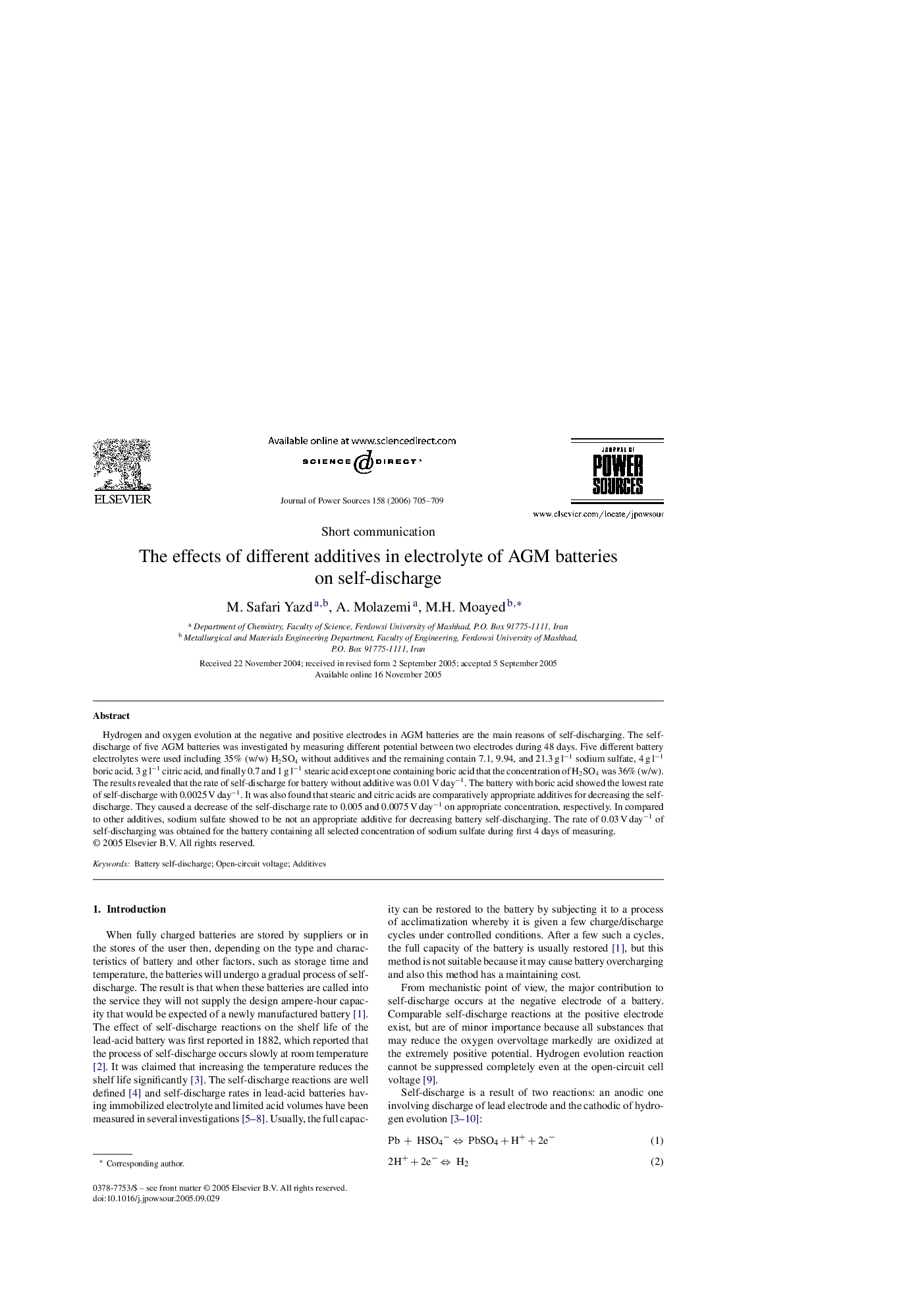| Article ID | Journal | Published Year | Pages | File Type |
|---|---|---|---|---|
| 1287623 | Journal of Power Sources | 2006 | 5 Pages |
Hydrogen and oxygen evolution at the negative and positive electrodes in AGM batteries are the main reasons of self-discharging. The self-discharge of five AGM batteries was investigated by measuring different potential between two electrodes during 48 days. Five different battery electrolytes were used including 35% (w/w) H2SO4 without additives and the remaining contain 7.1, 9.94, and 21.3 g l−1 sodium sulfate, 4 g l−1 boric acid, 3 g l−1 citric acid, and finally 0.7 and 1 g l−1 stearic acid except one containing boric acid that the concentration of H2SO4 was 36% (w/w). The results revealed that the rate of self-discharge for battery without additive was 0.01 V day−1. The battery with boric acid showed the lowest rate of self-discharge with 0.0025 V day−1. It was also found that stearic and citric acids are comparatively appropriate additives for decreasing the self-discharge. They caused a decrease of the self-discharge rate to 0.005 and 0.0075 V day−1 on appropriate concentration, respectively. In compared to other additives, sodium sulfate showed to be not an appropriate additive for decreasing battery self-discharging. The rate of 0.03 V day−1 of self-discharging was obtained for the battery containing all selected concentration of sodium sulfate during first 4 days of measuring.
